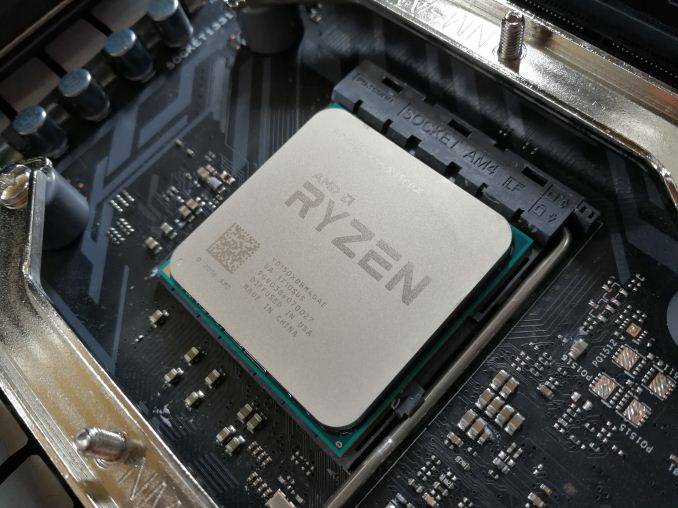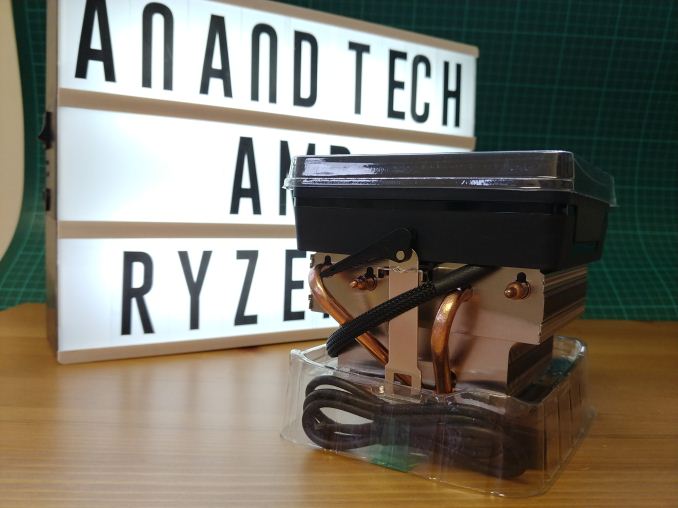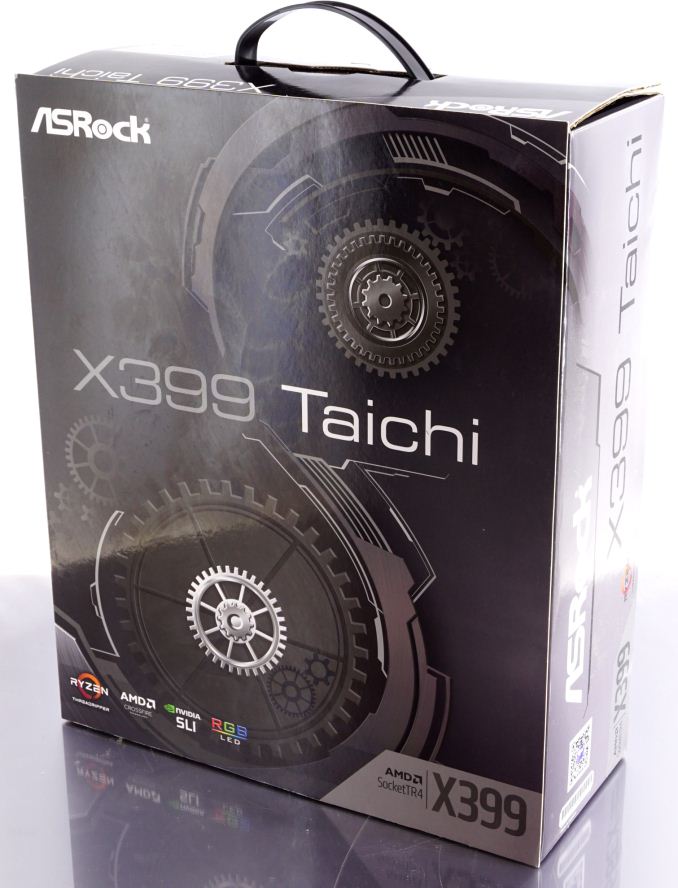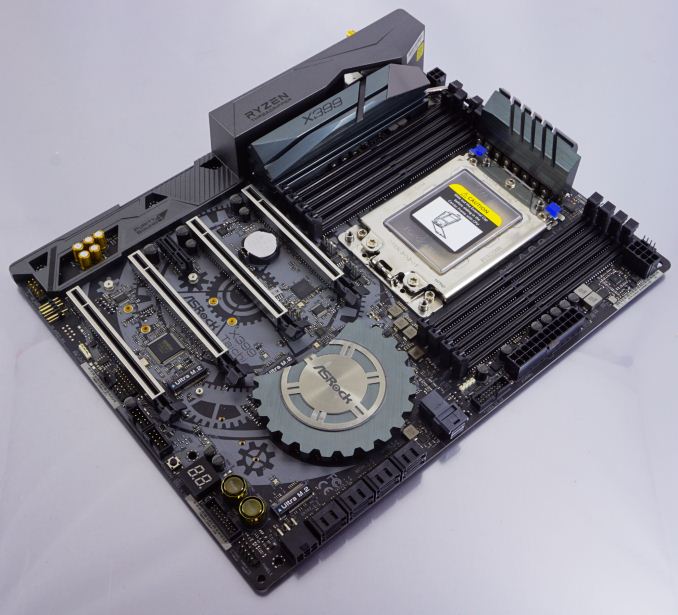The ASRock X399 Taichi Motherboard Review: Cost-Effective Threadripper
by E. Fylladitakis on October 26, 2018 8:00 AM EST- Posted in
- Motherboards
- AMD
- ASRock
- ThreadRipper
- X399
_678x452.png)
It has been over a year after the introduction of the Ryzen Threadripper processor and still the available compatible motherboards number around a dozen. ASRock is the company that offers the largest number of AMD X399 motherboards and they are merely three.
It is the ASRock X399 Taichi that we will be having a look at today. The ATX version of the Taichi is the most affordable AMD X399 motherboard available at the time of this review, retailing for $320 ($280 after rebate). Although the retail price of the ASRock X399 Taichi is nearly $100 lower than the second least expensive X399 motherboard we reviewed to this date, the specifications of the motherboard remain impressive. We are having a closer look at the motherboard and identify how ASRock managed to achieve this low price and what the X399 Taichi is missing compared to the competition.
| Recommended Reading on AMD Ryzen | |||
| 2700X and 2600X CPU Review |
2400G and 2200G APU Review |
Threadripper 2 2990WX Review |
Best CPUs |
 |
 |
%20-%20Copya_678x452.jpg) |
 |
ASRock X399 Taichi Overview
Unlike most motherboards, ASRock does not focus the marketing of the X399 Taichi on any specific group of users. The company's marketing efforts are generalized, hinting that their intent is to promote the X399 Taichi as a general-purpose design that would satisfy the widest user base.
A quick look at the motherboard's features and specifications suggests that the X399 Taichi is hardly different than its more expensive counterparts. It still has four full-size PCIe slots that support up to quad SLI/Crossfire, eight SATA connectors, three M.2 connectors, and even an U.2 port. We also find that it is using the same main subsystem chipsets, such as the Realtek ALC 1220 codec for sound and the Intel I211-AT NICs for dual LAN. Even the power circuitry is basically the same as that used in more expensive models, with an eight plus three phase power delivery design for the CPU and its SoC.
ASRock obviously did not manage to reduce the retail price of the motherboard by means of witchcraft, nor they are selling it at a loss. A closer look at the motherboard reveals that it does not have any of the newest features that we have seen on more advanced models. There is dual Gigabit LAN but no 10G NIC. There is 802.11ac Wi-Fi but no 802.11ad WiGig. There are headers for common 12V RGB LED strips but not for digital LED products. By avoiding the implementation of top-of-the-line features, ASRock's engineers managed to reduce the manufacturing cost of the X399 Taichi significantly without removing any of its core features and/or reducing the motherboard's quality or capacity.
The ASRock X399 Taichi is not the fastest AMD X399 motherboard that we have tested to this date either. As we will see in the following pages of this review, the main reason behind that is that the automated overclocking features of the motherboard are not as aggressive as they are on other motherboards. The ASRock X399 Taichi still does boost the processor's frequency by default but is more conservative in doing so, making it slightly slower than other products out-of-the-box. ASRock's engineers probably wanted to favour stability over performance on this particular implementation. Nevertheless, it is still just as capable as its more expensive counterparts when manual overclocking takes place.












29 Comments
View All Comments
The_Assimilator - Friday, October 26, 2018 - link
At least it isn't covered with tacky, useless, cost-increasing RGB bling.HideOut - Friday, October 26, 2018 - link
FFS I agree. and the ones t hat have RGB need to have an option to at least disable it. Sometimes you buy the product because of other features (or because some sale makes it cheaper than the non RGB version)twtech - Friday, October 26, 2018 - link
Yeah, I have to say I miss the days when a motherboard attempting to appeal to aesthetics merely had a black PCB instead of green, and perhaps a still relatively hard to see logo painted on as well.Now they end up looking like cheap toys for children 10 and under. Plastic non-functional action-toy type pieces sticking out, flashing lights, etc.
Lord of the Bored - Sunday, October 28, 2018 - link
I remember the period when RED motherboards were the new hotness, and I thought they were just extremely gaudy.If I only knew what the future held...
PEJUman - Sunday, October 28, 2018 - link
the Taichi here means Ultimate/Supreme, probably not the best translation but the closest I can think off. The martial arts is actually ‘Taichi chuan’, often shortened TaiChi. I can’t explain the gears, but understand this board meant to be the X399 flagship line from the Taichi name.PeachNCream - Monday, October 29, 2018 - link
The branding failure doesn't take away from the fact that ASRock is offering a competitive product at a reasonable price. If the company's marketing department just needs to lay off the mind-altering, illegal substances.prateekprakash - Friday, October 26, 2018 - link
Could you please confirm if the 3 m.2 slots are derived from the cpu or chipset lanes?Atari2600 - Friday, October 26, 2018 - link
IIRC at least two of them are direct to CPU.kobblestown - Friday, October 26, 2018 - link
Yes, all three of them are connected to the CPU. That's what you do when you have 64 PCIe lanes to play with. One of the dies provides X16 + x8 + 2*x4 for 2 M.2 slots and the other provides x16 + x8 + x4(M.2) + x4(to the X399 chip). Plus this board should support PCIe bifurcation so you can have a relatively cheap (just ~$50 because it doesn't require PCIe switch chip) card that allows you to plug 4 NVMe cards into one of the x16 slots so you get 7 NVMes to the CPU!The_Assimilator - Friday, October 26, 2018 - link
Is it just me, or are the yellow M.2 attachment points on the bottommost slot (the one closest to the SATA ports) on the *back* of the board as opposed to the front? Have a look at the board pictures on the "Visual Inspection" page to see what I mean.I'm glad that motherboard manufacturers are finally starting to offer a decent number of USB 3 ports on the back panel, but I'd still like to see at least a couple extra 2.0 ports for slower peripherals (mice and keyboards).
I take issue with this claim: "The concept is technically sound from an engineering point of view but it also could create compatibility problems because several PSUs have both CPU 12V connectors on a single cable, meaning that an extension would be necessary to reach the second connector on the motherboard." No decent PSU released in recent years with multiple EPS12V connectors has had them on the same cable, for the simple reason that the amount of current drawn if both were fully loaded would require wire that's thicker than the 16 or 18 gauge normally used, in order to not be a fire hazard.